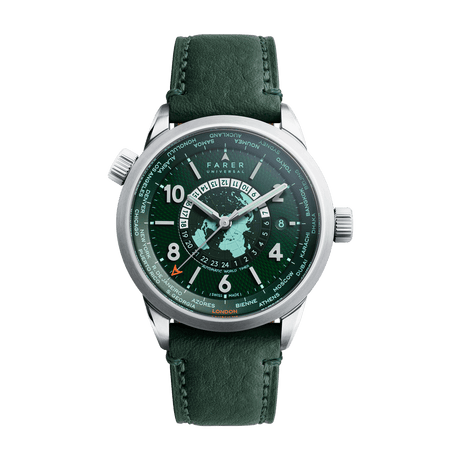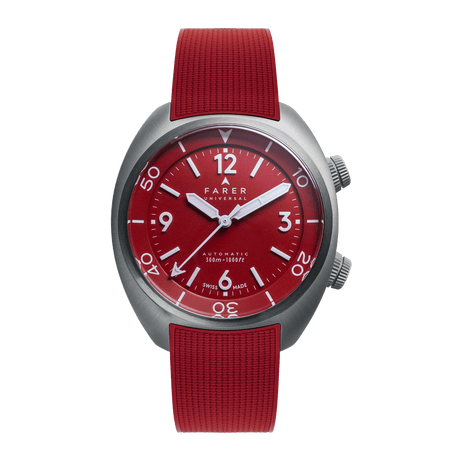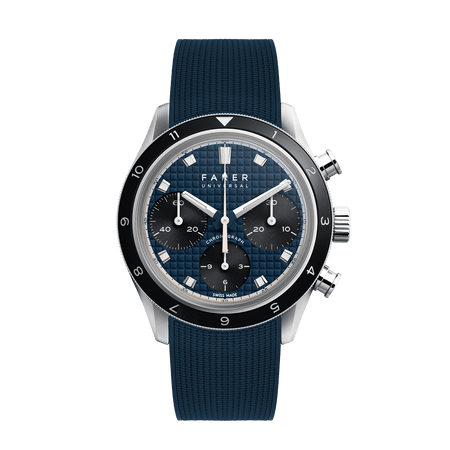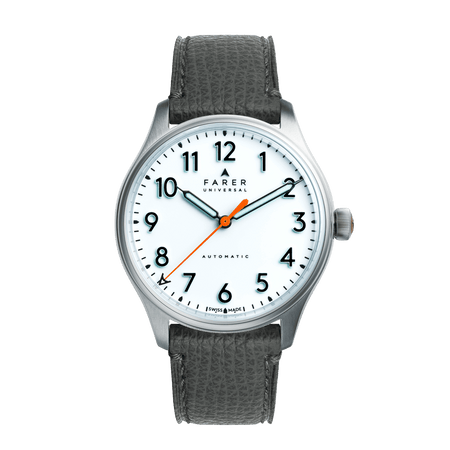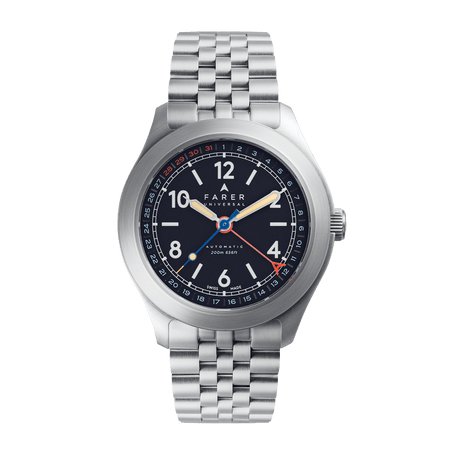GET HEARTS RACING WITH A PULSOMETER
featured | 28 Oct
You can measure your pulse with all sorts of electronic wrist gadgets, but it’s much more interactive and interesting (and a lot cooler) to measure it with a proper mechanical watch with an integral chronograph - a pulsometer.
The first pulsometers were really proto-chronographs, developed in the early years of the eighteenth century when watchmaking was in its infancy. You pushed a lever to start and stop a second hand (although the lever actually stopped the whole movement) and worked out your patient’s pulse from there. To afford an ordinary watch in the early 1700s, let alone one boasting a sophisticated complication like this, you’d have needed to be seriously wealthy. After all, most watches weren’t accurate enough to bother with a seconds hand, let alone one you could start and stop. This was Space Shuttle-level tech.




The first commercially-available pulsometer watches that emerged in the early twentieth century simply had a scale around their rehauts (the space around the dial edge between the dial and crystal). It was down to the hard-pressed medic to keep an eye on the constantly-running second hand and match it to the scale at the same time as counting heartbeats. Later, as chronographs developed and became affordable, things got more sophisticated. There’d be a start/stop pusher that activated and halted the chronograph hand (no more stopping the whole movement), so you didn’t have to wait for the second hand to come round to 12 before you took a pulse.


We’ve always loved the pulsometer complication - it’s different as well as being practical - so have designed a contemporary version using our new Monopusher Chronograph as the platform.
We’ve gone for a 30 pulsations scale (as opposed to 15) - it’s more accurate. To measure a heart rate all you need to do is start the chronograph by depressing the single pusher at 2 o’clock, count 30 heartbeats and then stop it. Just read your pulse rate from where the chronograph second hand has stopped by the scale on the rehaut.
You’re not limited to measuring heartbeats though. As well as the central chronograph seconds there’s a minute totaliser at 3 o’clock that records up to 30 minutes. That means you have the added bonus of being able to time your morning run AND your heart’s recovery rate - handy for keeping tabs on your fitness.


We wanted to continue the way the original pulsometers were visually striking but essentially simple to use. So we’ve created a silver-blue 'torchlight' sunray backdrop for the dial that makes the subdials and pulse scale stand out clearly. The running seconds hand t 9 also uses a shade of blue to match. We’ve opted for a rich orange on both the chrono seconds and minutes hands as well as the pulsometer scale to make it quick and simple to track at a glance.
The hour numerals are three-dimensional and applied. Built out of Grade A Super-LumiNova so they're as easy - and elegant - in the dark as daylight.
Reflections won’t get in the way either. The curved box case sapphire crystal has a double layer of anti-reflective treatment. There’s also a sapphire display caseback window so you can see the chronograph movement’s complicated levers and gears in action.


Inside the 316L stainless steel case, behind that display window, is a modern Sellita SW510 MP movement running at a brisk 28’800 vibrations per hour (4 Hz). We’ve custom-finished it with proper heat-blued screws, a guilloché winding bridge and our own turbine-design rotor. It’s rated Elaboré grade too - adjusted in three positions to minimise the effect of gravity on the balance wheel. And even if you take your Pulsometer off for the weekend (although we’re not sure why you would), 62 hours of power reserve means you can just pick it up on Monday morning without any need to wind it.
The 40.5mm case is designed to snug down onto your wrist with lugs that curve down sharply, so you shouldn’t have any bother getting your Pulsometer under your cuff (it’s just 14.7mm deep). We’ve engraved the case sides with an arced harlequin pattern and added our signature bronze-capped winding and setting crown.
A pulsometer is a way to strap a piece of horological history to your wrist. It’s an absolutely functional piece of watchmaking that, as well as being unusual and interesting, is properly practical too.



